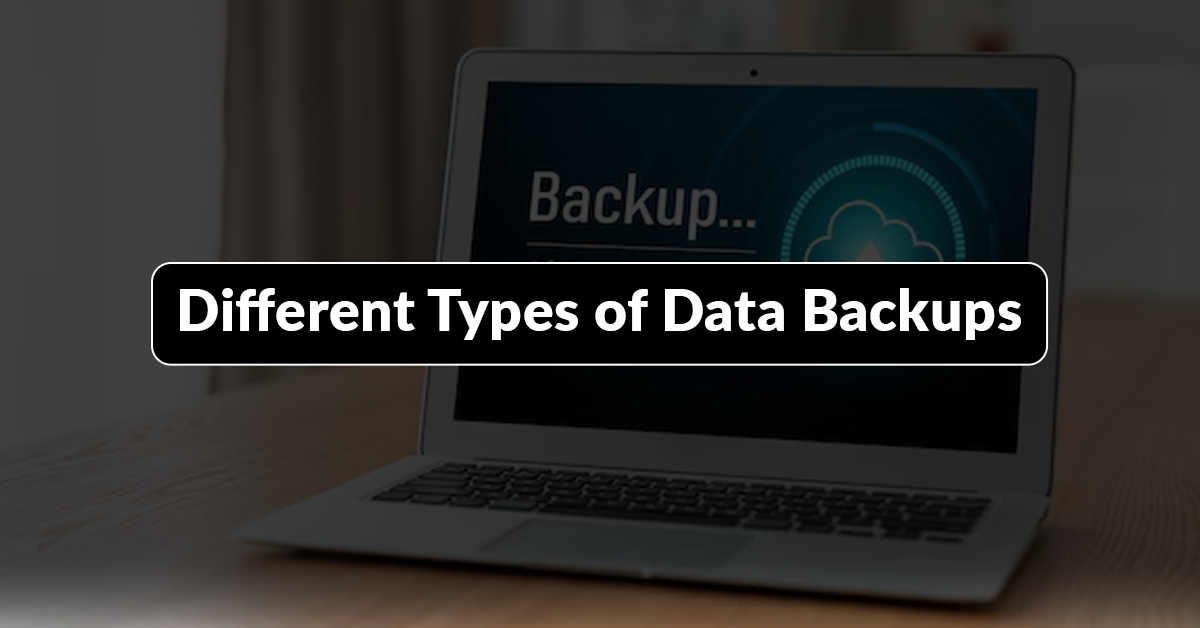In today's digital age, data is the lifeblood of any organization. Companies rely heavily on data from customer information to financial records to operate efficiently and make informed decisions.
However, data loss due to hardware failure, cyber-attacks, or human error can have devastating consequences. This is where data backups come into play. By understanding the different types of data backups, businesses can ensure continuity and safeguard their critical information.
This blog explores the different types of data backups and their importance.
1. Full Backup

It is the most comprehensive type of backup, involving the complete copying of all data from a specified system or location. This includes files, applications, and system configurations.
The primary advantage of a full backup is that it offers a complete snapshot of the data at a particular time. This makes data recovery straightforward and fast, as all the information is stored in a single backup file.
However, it requires significant storage space and can be time-consuming, especially for large datasets. Due to these factors, they are typically scheduled less frequently, such as weekly or monthly.
2. Incremental Backup

They are designed to save time and storage space by only backing up the data that has changed since the last backup, whether full or incremental.
This method is efficient because it reduces the amount of data that needs to be copied, resulting in faster backup times and less storage usage.
The main drawback of incremental backups is that data restoration can be more complex and time-consuming. To restore the latest data version, one must first restore the last full backup and then apply each subsequent incremental backup in the correct order.
Despite this complexity, incremental backups are often used with full backups to create an efficient and comprehensive backup strategy.
3. Differential Backup

A differential backup strikes a balance between full and incremental backups. It involves backing up all the data that has been changed since the last full backup.
Unlike incremental backups, differential backups do not reset after each backup. Instead, they continue to grow until the next full backup is performed.
This method simplifies the restoration process compared to incremental backups. Only the last full backup and the most recent differential backup are needed to restore data.
However, differential backups can become progressively more prominent over time, potentially consuming more storage than incremental backups.
4. Mirror Backup

It creates an exact copy of the source data and mirrors it in real-time. This ensures the backup is always up-to-date, providing an immediate and accurate reflection of the current data state.
They are ideal for businesses requiring minimal downtime and real-time data protection.
The downside of mirror backups is that they do not retain previous versions of files. If data is accidentally deleted or corrupted, the mirror backup will replicate the changes, making it impossible to recover the original data.
Therefore, they are often combined with other backup types to provide a more comprehensive data protection strategy.
Choose our best IT Support Services in Poway and unveil the power of a technology-driven approach to improve efficiency.
5. Cloud Backup

This involves storing data on a remote server managed by a third-party service provider, and it offers several advantages, including scalability, accessibility, and enhanced security.
They are typically automated, reducing the risk of human error and ensuring regular and consistent backups.
One key benefit of cloud backup is its ability to protect against physical disasters, such as fire or theft, that could destroy on-site backups. Additionally, cloud service providers often offer encryption and redundancy, further enhancing data security.
However, internet bandwidth can limit cloud backups and incur ongoing subscription costs. Despite these potential drawbacks, cloud backup remains popular for businesses seeking reliable and scalable data protection solutions.
6. Hybrid Backup

This combines on-site and cloud backup strategies to provide an inclusive data protection solution. By storing backups locally and remotely, businesses can benefit from the fast recovery times of on-site backups and the added security of off-site cloud storage.
Hybrid backups offer the best of both worlds, ensuring that critical data is protected and accessible.
Conclusion
In the end, understanding the different types of data backups is crucial for developing a strong data protection strategy. Each backup type offers unique advantages and potential drawbacks, and the best approach often involves combining multiple methods to meet specific business requirements.
By implementing a comprehensive backup strategy, companies can ensure data integrity, minimize downtime, and protect against data loss, ultimately supporting their long-term success and resilience.
Call us at (855) 626-3127 or email us at help@fusionfactor.com to learn how our thorough IT support services can transform your business and help you stay ahead in the ever-evolving business world.


